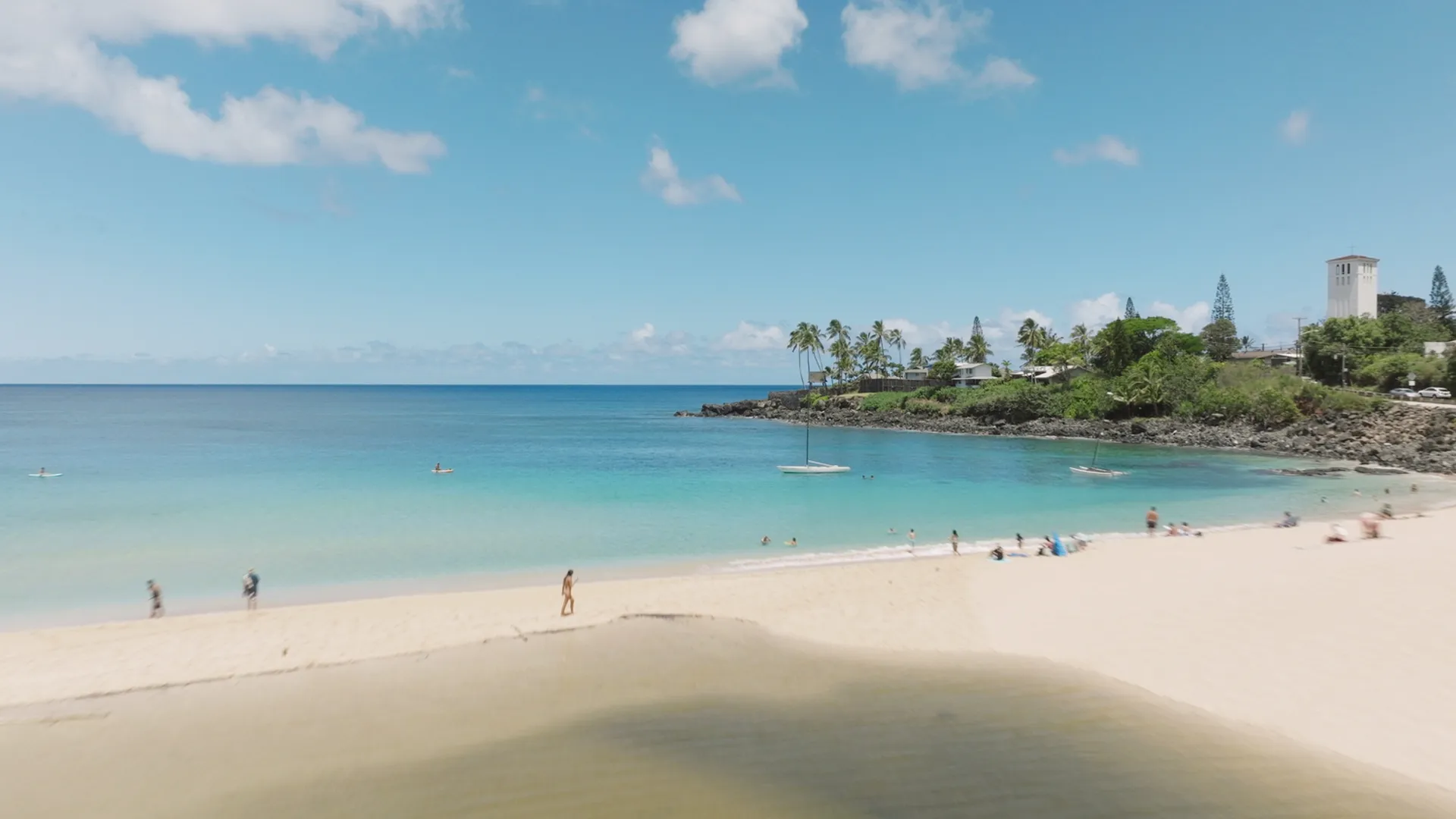
“Brew Your Best Cup”- Coffee Brewing Workshop
Heavenly Hawaiian Coffee Farm • Farm • Holualoa, Island of Hawaii • Hawaii
.BSdLFLE5_bAHDr.webp)
"Waimea" tells its own story. The name means "reddish water" in Hawaiian. Heavy rains wash soil from Waimea Valley down to the bay. The Waimea River carries this earth to the sea. Waters turn an earthy red color. Land and ocean connect before your eyes.
Long ago, Waimea was a major ahupuaʻa. This traditional land division ran from mountains to sea. Smart Hawaiians understood how to manage resources. Communities lived in balance with nature.
They used mountains, valleys, and ocean together. Everything stayed healthy this way. Waimea Valley fed into the bay. Native Hawaiians made this their sacred center. Religious ceremonies happened here. Crops grew in rich soil. The Koʻolauloa district first claimed this area. In 1886, it moved to Waialua district. Sugar companies wanted the water and forests.
Changes came fast after that. By 1893, when the Hawaiian Kingdom fell, forests were gone. Sugar plantations covered the plains. This clearing had terrible results.
In 1894, heavy rains brought massive floods to Waimea Valley. Thousands of tons of mud rushed down. The whole village disappeared. Valuable kalo terraces got buried. All the farming work was lost.
But something good came from disaster. That mud created firm banks. Sands began to collect at Waimea Bay. They built the wide beach you see today.
Before this flood, the Waimea River let canoes paddle upstream. Traders found safe harbor there.
People kept changing the land. In the late 1920s, crews quarried rock from the valley. They built Kamehameha Highway with it. The church tower at Saints Peter and Paul Mission started as a silo for crushed rock.
From the mid-1950s to early 1960s, something bigger happened. Workers mined over 200,000 tons of sand from Waimea Bay. They used it to make beaches in Waikīkī. Ala Moana and Magic Island got built with this sand too. All that digging made the bay much deeper.
Surfer Fred Van Dyke noticed something interesting. The sand removal might have changed how waves break. This could explain why surfers first challenged Waimea's big waves in 1957.

The ancient Waimea River where legends and history flow together
Nature kept reshaping things. Strong El Niño winters in 1969 and 1983 brought huge waves. They knocked down a sidewalk. A wide sand dune became a 20-foot cliff. The waves also uncovered old treasures. Coins from the early 1900s appeared. An 1883 Hawaiian Kingdom coin showed up. Someone found a human skull. A Hawaiian petroglyph came to light too.
Moʻolelo—Hawaiian stories and legends—connect deeply to Waimea and the North Shore. While specific tales about Waimea Bay on Oʻahu are harder to find, the spiritual importance is clear. Other places named Waimea have rich stories. On Kauaʻi, legends tell of the fishing god Kaneaukai and sacred stone idols. These show how important such places were to Hawaiian people.
In the early 1800s, trails linked Honolulu to North Shore Waimea. This shows how connected the island was. The broader North Shore holds many legends. Guardian spirits watch over the land. Stories tell of great leaders. Natural features hold sacred power. Physical and spiritual worlds intertwined.
Breaking up the ahupuaʻa system changed everything. Industry disrupted traditional life. The landscape transformed completely. Understanding these layers matters. Sacred origins run deep. Changes affected everything. Culture still endures.
This knowledge makes your visit richer. Waimea becomes more than scenery. It becomes living history.
Remember that Waimea is a sacred place with deep cultural significance. Visit with respect and aloha.
Learn about Mālama ʻĀina →
Heavenly Hawaiian Coffee Farm • Farm • Holualoa, Island of Hawaii • Hawaii

